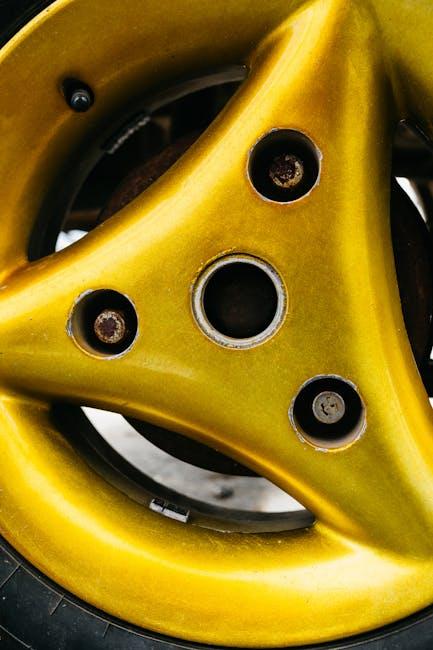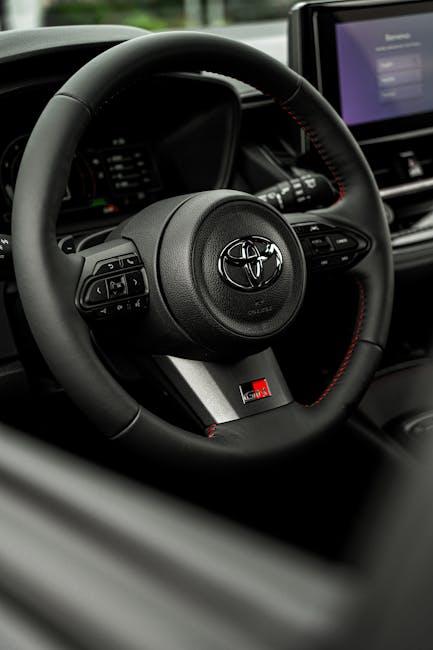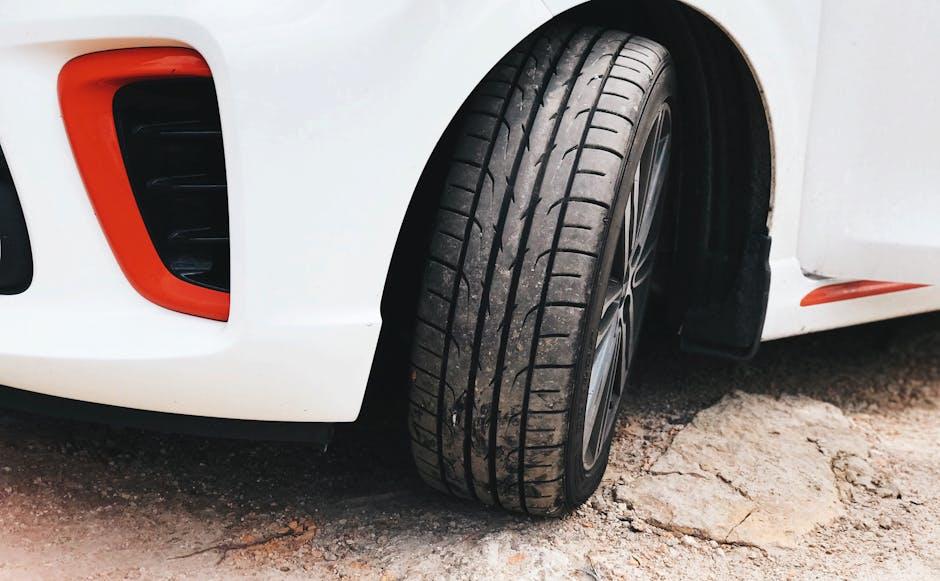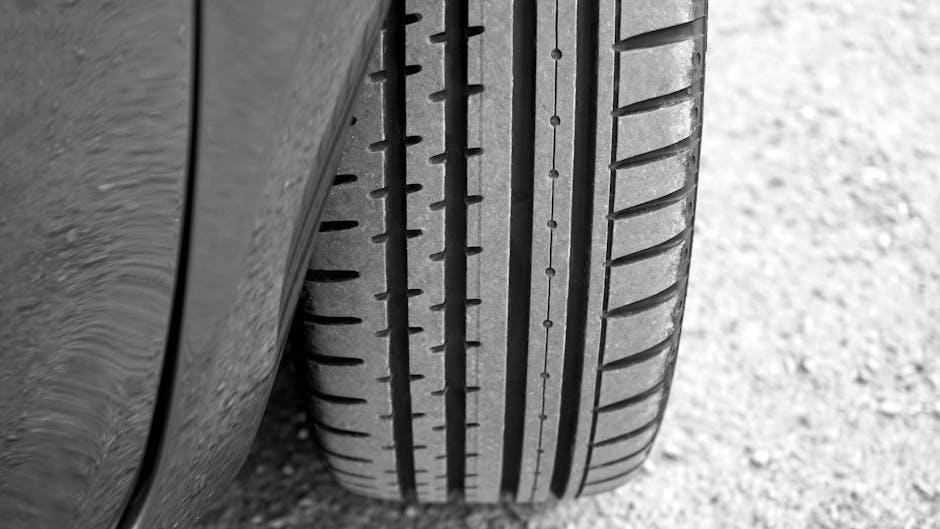Picture this: you’re cruising down the road, enjoying the smooth hum of your car’s engine, when suddenly you notice it pulling slightly to one side or your steering wheel isn’t quite centered. These subtle shifts and irregularities might seem minor, but they could be whispering an important message about your car’s health. Wheel alignment, often overlooked, plays a crucial role in ensuring your vehicle’s performance, safety, and tire longevity. In this article, we’ll uncover the telltale signs that your car is in need of a wheel alignment, helping you catch potential problems before they turn into costly repairs.
Table of Contents
- Common Driving Symptoms Indicating Wheel Alignment Issues
- How Uneven Tire Wear Reveals Alignment Problems
- The Impact of Misalignment on Vehicle Handling and Safety
- When Steering Wheel Vibration Signals the Need for Alignment
- Understanding the Effects of Poor Alignment on Fuel Efficiency
- Practical Tips for Maintaining Proper Wheel Alignment
- Q&A
- Closing Remarks

Common Driving Symptoms Indicating Wheel Alignment Issues
When your car’s wheels are misaligned, the symptoms often manifest in everyday driving experiences, signaling that it’s time for a professional check. One of the most noticeable signs is the vehicle pulling to one side, even on a straight, flat road. This subtle tug requires constant steering correction, which can quickly lead to driver fatigue. Additionally, you might experience uneven or accelerated tire wear, with certain parts of the tire tread thinning faster than others, reducing tire lifespan and compromising safety.
Another symptom to watch for is a vibrating steering wheel, especially at higher speeds. This isn’t always due to tire balance issues—it can indicate that your wheels are out of alignment. You might also notice the steering wheel is off-center when driving straight, making it difficult to maintain a steady course. Below is a quick reference table highlighting common symptoms and their potential impacts:
| Symptom | Possible Impact |
|---|---|
| Vehicle pulls to one side | Increased steering effort, safety risk |
| Uneven tire wear | Shortened tire life, poor traction |
| Steering wheel vibration | Unstable handling at speed |
| Off-center steering wheel | Steering discomfort, poor alignment control |

How Uneven Tire Wear Reveals Alignment Problems
When you spot irregular patterns on your tires, this often signals that your wheels are not aligned correctly. Instead of wearing evenly across the entire tread, some areas may appear more worn or bald, which can drastically reduce tire lifespan and compromise vehicle safety. Common signs include one side of the tire wearing down faster than the other or patchy wear spots concentrated toward the inside or outside edges. These subtle clues reflect underlying issues with your suspension geometry, requiring immediate attention to restore proper balance and avoid further costly damage.
Watch out for these uneven wear patterns that hint at specific alignment issues:
- Feathering: When tire edges feel smooth in one direction but sharp in the opposite, indicating improper toe alignment.
- Cupping: Small dips or scallops around the tire surface, often due to worn suspension components combined with misalignment.
- Camber wear: Excessive wear on just the inner or outer shoulder, pointing to incorrect camber angles.
| Wear Type | Possible Alignment Problem | Impact |
|---|---|---|
| Feathering | Toe misalignment | Steering pull and vibration |
| Cupping | Suspension issues & misalignment | Harsh ride and noise |
| Camber wear | Incorrect camber angle | Reduced tire life |

The Impact of Misalignment on Vehicle Handling and Safety
When your wheels are out of alignment, the way your vehicle handles on the road changes dramatically. Steering becomes less responsive, causing a lag between your input and the vehicle’s reaction, which can be especially dangerous in emergency maneuvers. You might also notice your car pulling persistently to one side, forcing constant corrections and increasing driver fatigue. This misdirection not only impacts smoothness but compromises your ability to maintain control, particularly on wet or uneven surfaces. Over time, poor alignment wears out tires unevenly, resulting in reduced traction and grip.
Safety risks multiply as tire wear progresses and control diminishes. Here are some of the subtle yet concerning consequences of driving misaligned:
- Decreased fuel efficiency due to uneven rolling resistance
- Increased strain on suspension components, leading to premature failure
- Longer stopping distances, especially on slippery roads
| Effect | Result on Driving |
|---|---|
| Uneven Tire Wear | Reduced grip, risk of blowouts |
| Poor Steering Control | Delayed response, pulling sides |
| Suspension Stress | Costly repairs, unsafe ride |
| Lower Fuel Efficiency | Increased fuel costs |
Regular alignment checks not only preserve your vehicle’s handling precision but play a critical role in ensuring your safety and extending the lifespan of your car’s tires and suspension parts.

When Steering Wheel Vibration Signals the Need for Alignment
When you grip the steering wheel and feel an unusual vibration coursing through your hands, it’s more than just an annoyance—it’s a clear warning sign from your vehicle’s alignment system. Such tremors often indicate that your wheels aren’t positioned correctly relative to the road, which can lead to uneven tire wear and compromised handling. This subtle shake may become more pronounced as you increase speed, transforming a smooth drive into a jittery experience that begs for immediate attention.
Ignoring these vibrations can have consequences beyond discomfort. Misaligned wheels increase strain on suspension components and decrease fuel efficiency, ultimately affecting your vehicle’s performance and safety. To help you identify when to seek a professional check, keep an eye out for these signs:
- Consistent vibration through the steering wheel even on smooth roads
- Vehicle pulling slightly to one side when driving straight
- Uneven or rapid tire tread wear
- Loose or wandering steering feel during driving

Understanding the Effects of Poor Alignment on Fuel Efficiency
When your car’s wheels are misaligned, it forces the engine to work harder than necessary, directly impacting fuel consumption. Poor alignment causes uneven tire wear, increasing rolling resistance and making your vehicle less efficient on the road. This inefficiency can lead to noticeable dips in your miles per gallon (MPG), meaning more frequent visits to the pump and higher expenses over time. Keeping your wheels properly aligned ensures that your tires roll smoothly, requiring less energy to maintain speed and thus enhancing your fuel economy.
Key factors affected by poor alignment include:
- Increased drag due to uneven tire wear
- Reduced tire lifespan, leading to more frequent replacements
- Strain on suspension components from compensating misaligned wheels
- Lower overall vehicle stability, contributing to inefficient driving
| Symptom | Fuel Efficiency Impact |
|---|---|
| Uneven tire wear | Up to 10% decrease in MPG |
| Vehicle pulling | 5-7% decrease in MPG |
| Steering wheel vibration | 3-5% decrease in MPG |

Practical Tips for Maintaining Proper Wheel Alignment
Keeping your wheels properly aligned can significantly prolong tire life and enhance overall driving comfort. Regularly check your tire pressure and look out for uneven wear patterns, which can be early indicators of misalignment. Scheduling routine inspections, especially after hitting potholes or curbs, can prevent minor alignment issues from escalating into costly repairs. Remember, even subtle shifts in your vehicle’s posture can affect fuel efficiency and handling, so staying proactive is key.
Consider incorporating these simple habits into your car care routine:
- Inspect tire grooves monthly for unusual wear.
- Monitor steering response and note any pulling to one side during drives.
- Watch for vibration in the steering wheel, which could signal balance or alignment problems.
- Maintain suspension components to ensure they don’t contribute to misalignment.
By treating wheel alignment as an essential part of vehicle maintenance, you ensure safer handling and a smoother ride every time you hit the road.
Q&A
Q: What exactly is a wheel alignment, and why is it important?
A: Wheel alignment refers to adjusting the angles of your car’s wheels so they are set to the manufacturer’s specifications. Proper alignment ensures that your tires touch the road evenly, improving handling, fuel efficiency, and tire longevity.
Q: How can I tell if my car needs a wheel alignment?
A: There are several telltale signs, such as uneven tire wear, your vehicle pulling to one side, a crooked steering wheel when driving straight, or unusual vibrations through the steering wheel. If you notice any of these, it’s a good idea to have your alignment checked.
Q: What does uneven tire wear look or feel like?
A: If one side of your tire looks more worn than the other, or if the tread is wearing down unevenly across the tire surface, it’s a classic indicator that your wheels might be out of alignment. Uneven wear shortens tire life and can be costly over time.
Q: Why does my car pull to one side when I’m driving straight?
A: When your wheels are misaligned, the car’s weight distribution shifts unevenly, causing it to drift left or right. This can be subtle or pronounced, but either way, it’s a sign your alignment needs attention.
Q: Is a crooked steering wheel always a sign of alignment issues?
A: Not always, but it’s a strong hint. If your steering wheel isn’t centered when you’re driving straight down a level road, your wheels may need realignment to restore proper balance.
Q: Can a misaligned wheel cause vibrations?
A: Yes. Misalignment can cause uneven tire wear and imbalance, which often translate into vibrations felt in the steering wheel or throughout the vehicle, especially at higher speeds.
Q: How often should I get a wheel alignment checked or done?
A: It’s good practice to have your alignment checked every 6,000 miles or during routine tire rotations. Also, after hitting potholes, curbs, or after suspension repairs, an alignment check is wise.
Q: What are the risks of ignoring wheel alignment issues?
A: Neglecting alignment can lead to premature tire wear, decreased fuel efficiency, poor handling, and increased stress on your vehicle’s suspension components—which can turn a minor problem into an expensive repair.
Q: Can I do a wheel alignment myself, or should I visit a professional?
A: Wheel alignment requires specialized tools and knowledge. While DIY enthusiasts might attempt it, for safety and precision, it’s best left to professionals who can use computerized equipment to get the angles just right.
Q: How will I feel after a proper wheel alignment?
A: Driving will feel smoother, your car should track straight without pulling, steering will feel balanced, and your tires will wear more evenly, saving you money and enhancing safety on the road.
Closing Remarks
In the symphony of your car’s performance, wheel alignment plays a subtle yet vital tune. Recognizing the signs early—from uneven tire wear to that persistent steering pull—ensures your ride remains smooth, safe, and efficient. Paying attention to these hints not only protects your tires but also safeguards your journey on the road ahead. So, listen closely to what your wheels are telling you; a timely alignment could be the key to keeping your car—and your travels—in perfect harmony.
